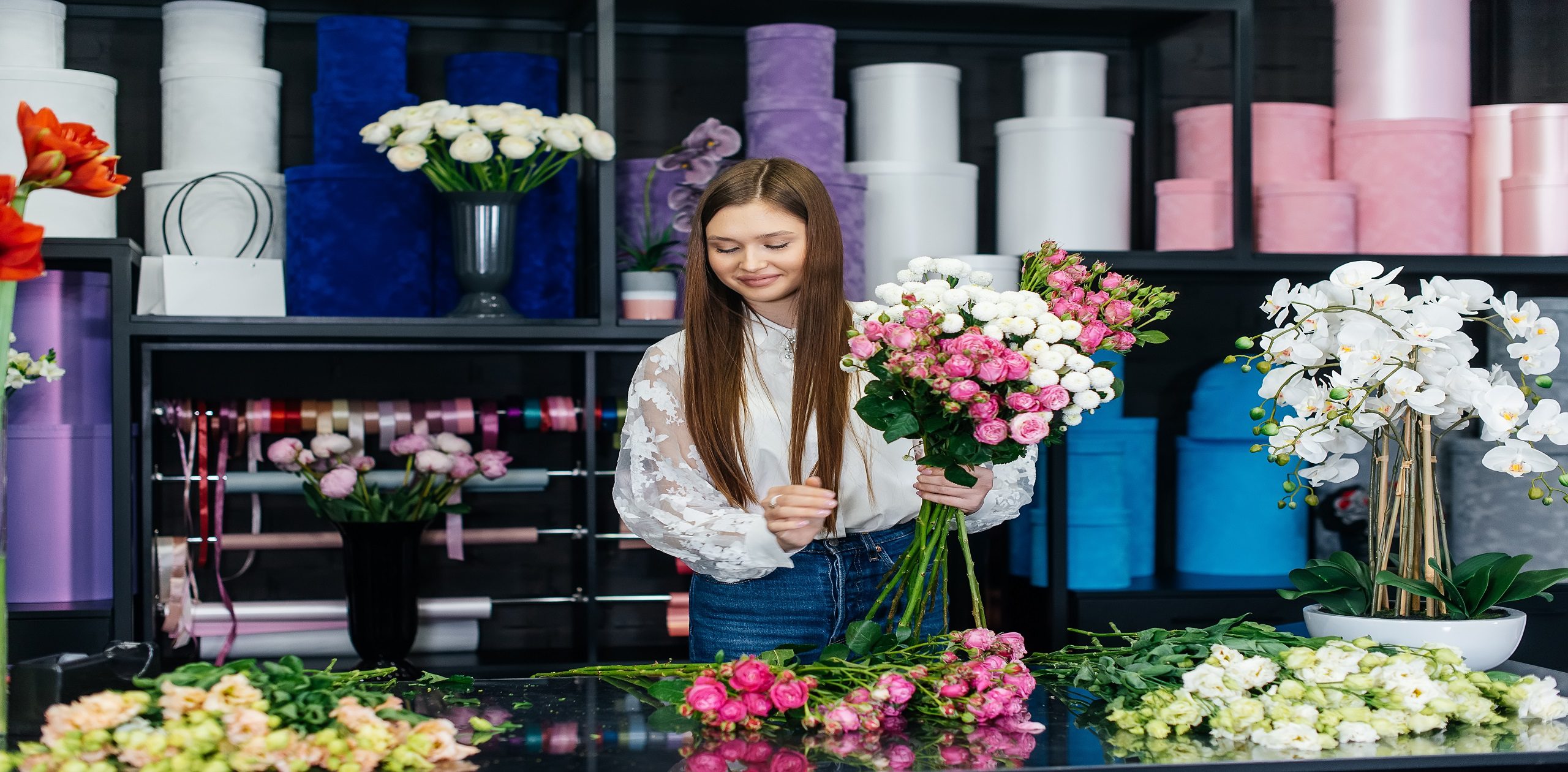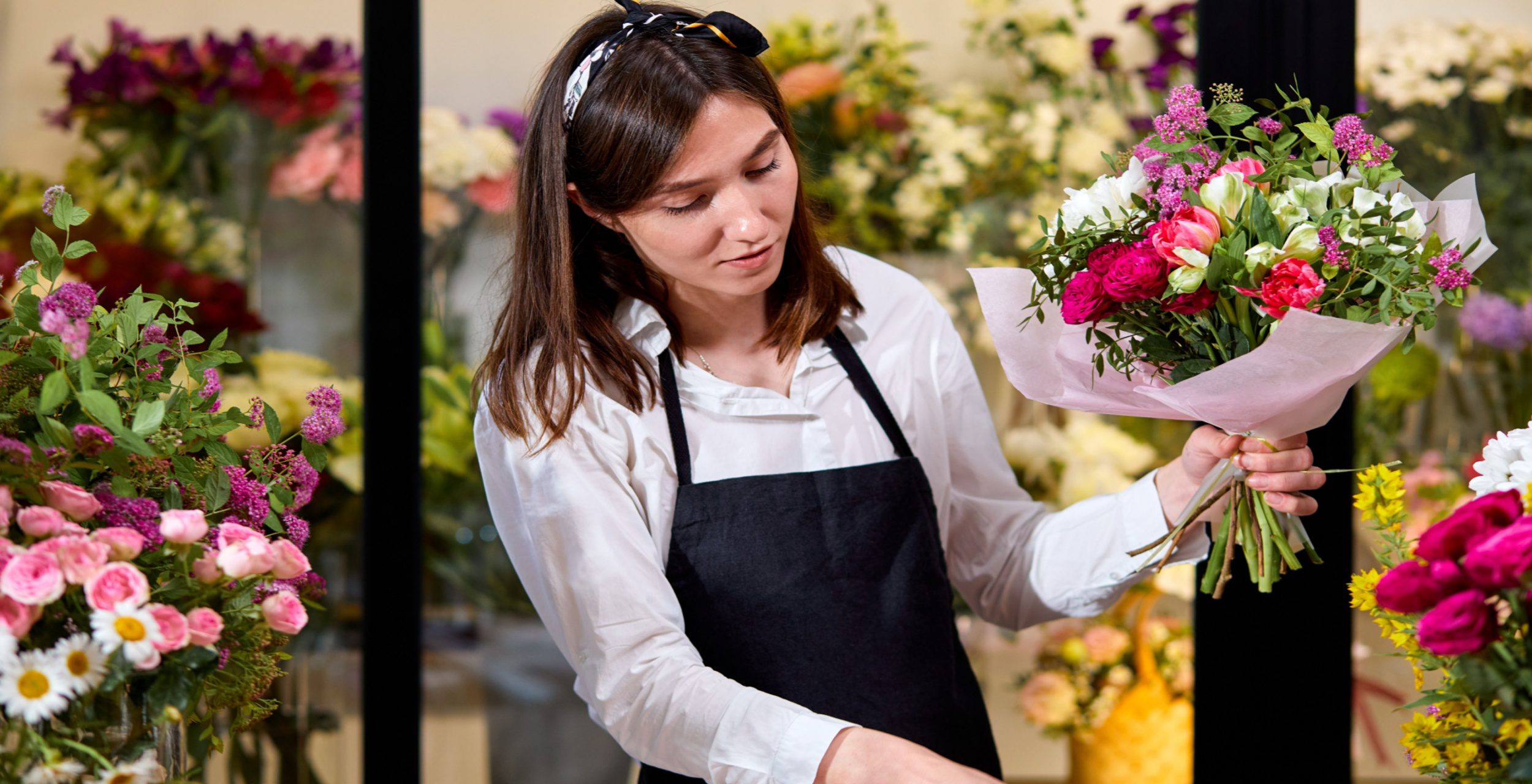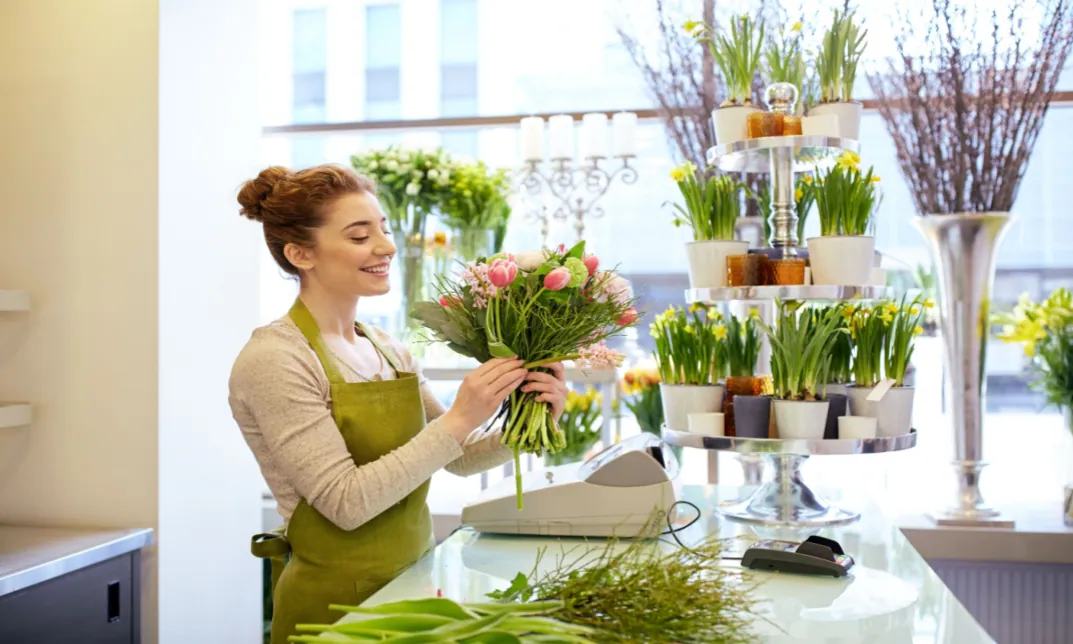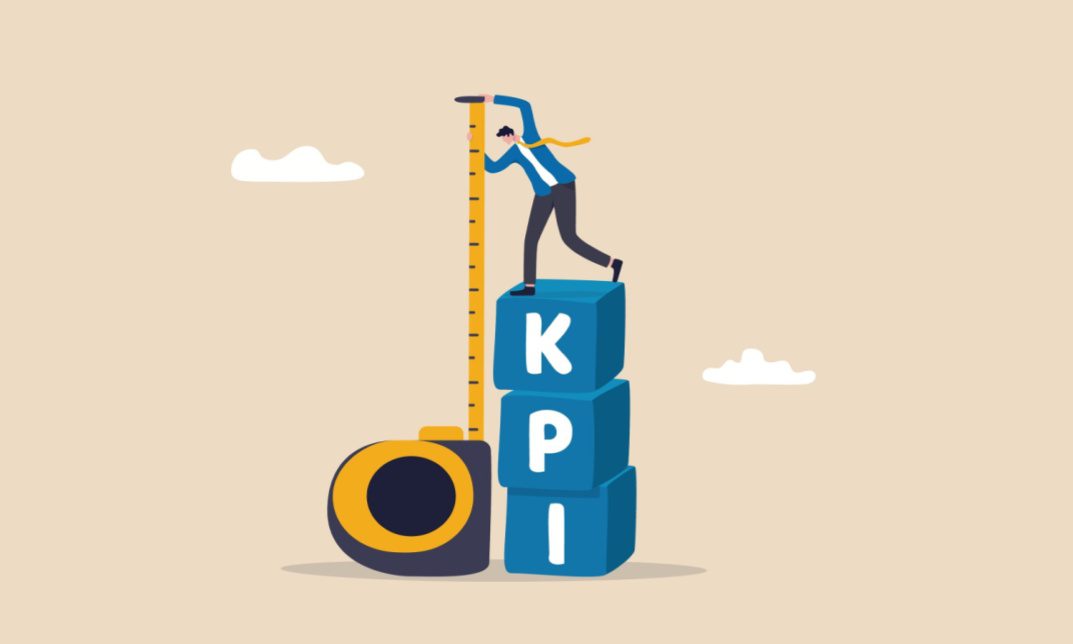No products in the basket.
Ever see a shop window full of pretty flowers and just smile? Flowers can make any place look amazing with their bright colours and sweet smells. But how do these flowers get from fields to vases? That’s where floristry comes in! Moreover, this blog will cover everything you need to know about floristry.
What is floristry?
Floristry dates back to ancient civilisations, where flowers played a significant role in religious ceremonies and social events. The Egyptians, Greeks, and Romans all utilised flowers not just for their beauty but for their symbolic meanings as well. Floristry in ancient times was about more than aesthetics; it was deeply intertwined with cultural rituals and expressions of sentiment.
Today, floristry has evolved into a minimalistic craft and a booming industry. Modern florists blend traditional techniques with contemporary trends, creating stunning arrangements for all occasions. The industry has expanded to include a wide range of services, from event decoration to everyday floral gifts.

What are the foundations of floristry?
A fundamental aspect of floristry is knowing your flowers. From roses and lilies to exotic orchids and seasonal wildflowers, each variety has unique characteristics and care requirements. Understanding these differences is crucial for creating lasting and visually appealing arrangements.
What are the types of floristry?
Floristry can be categorised into two main types. Here’s a breakdown of these two types:
Floral design
This is the artistic side of floristry, where flowers are arranged into beautiful and creative compositions. There are many different styles of floral design, each with its own unique characteristics. Here are some of the most popular ones:
- Ikebana: A minimalist and symbolic approach to flower arranging originating from Japan. Ikebana arrangements often use a minimal number of flowers and focus on line, form, and space.
- English Garden: A style that creates a lush and romantic feel, often using a variety of flowers, foliage, and textures.
- Modern/European: Modern European flower design reflects aesthetic modification. Clean lines and a minimalist approach create a sense of elegance and understated luxury.
- Contemporary/Dutch: A cutting-edge style that pushes the boundaries of floral design by incorporating unexpected elements and techniques. It often features bold colours, unusual flowers and foliage, and dramatic sculptural forms.
- Australian: A bold and vibrant style that showcases the unique and beautiful native flowers of Australia, like kangaroo paw, banksia, and waratah.
Event Floristry
This is the most familiar type, where florists create arrangements specifically for weddings, birthdays, anniversaries, galas, conferences, and other events. They work closely with clients to understand the theme, style, and budget, crafting floral masterpieces that elevate the entire occasion.
Besides these two main categories, there are also several other specialised areas within floristry, such as:
- Wedding Floristry: A sub-category of event floristry, wedding florists specialise in creating the perfect floral ambience for the most special day of a couple’s life. From bridal bouquets and boutonnieres to centrepieces and ceremony installations, they create a cohesive and stunning floral story that reflects the couple’s personalities and vision.
- Funeral Floristry: Sensitivity and respect are key in this area. Funeral florists create arrangements that express sympathy and offer solace during a difficult time. Moreover, they design tasteful and dignified pieces, often incorporating specific flowers with symbolic meanings.
- Sustainable Floristry: This growing trend focuses on eco-conscious practices throughout the floral journey. Sustainable florists prioritise locally sourced, seasonal flowers, use recycled materials in their designs, and minimise waste in their processes.
Floristry as an Art Form
Floristry is much more than just arranging flowers; it is a form of creative expression. Florists use flowers as their medium to convey emotions, tell stories, and create visual impact. Moreover, a significant part of floristry involves the strategic use of colours and textures. Florists must understand colour theory and how different textures can enhance or detract from the overall design.
Furthermore, creating arrangements based on seasons or themes adds a layer of relevance and excitement to floristry. Whether it’s a spring bouquet full of pastel flowers or a Christmas wreath adorned with holly and pine, these designs reflect the time of year and occasion.
What is the 3–5–8 rule in floristry?
The 3-5-8 rule in floristry is a guideline for creating balanced and visually pleasing flower arrangements. Here’s what it means:
- 3: Use three different types of flowers. These are your focal flowers, the stars of the show. They should vary in size, shape, and colour to add interest.
- 5: Incorporate five stems of greenery. Greenery provides depth, texture, and a natural base for the blooms. You can use various types of foliage, such as eucalyptus, ferns, or palms.
- 8: Add eight stems of filler flowers. These smaller blooms fill in gaps between the focal flowers and greenery, creating a fuller and softer look. Choose delicate flowers that complement the overall design.
Tools used in Floristry
Floristry involves the use of a variety of specialised tools and equipment to create beautiful and long-lasting floral arrangements. Some common tools used in floristry include:
- Florist Scissors
- Pruning Shears (Secateurs)
- Floral Knives
- Wire Cutters
- Floral Wire
- Floral Tape
- Floral Foam (Oasis)
- Vases and Containers

What does a florist do?
A florist is a professional who arranges and sells flowers. Their job involves many tasks to ensure that customers receive beautiful and fresh floral arrangements. Additionally, some of the key roles of a florist are:
- Designing Arrangements: Florists create beautiful bouquets, wreaths, and other floral displays for different occasions, such as weddings, birthdays, and funerals. They use their creativity and knowledge of flowers to create unique designs.
- Selecting Flowers: Florists choose the best flowers and plants to use in their arrangements. They consider colour, size, and shape to make sure the flowers look their best together.
- Caring for Flowers: To keep flowers fresh and vibrant, florists properly water, cut, and store them. They also use flower food and other treatments to extend the life of the flowers.
- Customer Service: Florists help customers choose the right flowers for their needs. They offer advice on which flowers are in season, what colours go well together, and how to care for the arrangements.
- Sales and Marketing: Many florists run their own shops, so they also handle tasks like pricing, displaying flowers, and promoting their business. They may use social media, websites, and local advertising to attract customers.
- Delivering Orders: Florists often deliver flowers to customers. This can include setting up arrangements at events such as weddings or bringing bouquets to someone’s home or office.
- Handling Supplies: Florists manage supplies such as vases, ribbons, and floral foam. They make sure they have everything they need to create and deliver their floral designs.
Florist Salary: How much do they earn?
Florists create beautiful flower arrangements for various occasions. If you’re thinking about becoming a florist, you might wonder how much they earn. Here’s a basic idea of the florist’s salary:
- Average Salary: Florists in the UK earn an average of £18,000 to £25,000 per year. This amount can change based on experience, location, and the type of employer.
- Starting Salary: When starting, a florist can expect to earn between £14,000 and £17,000 per year. As you gain more experience and skills, your salary will likely increase.
- Experienced Florists: With several years of experience, a florist can earn between £20,000 and £30,000 per year. Moreover, experienced florists may take on more responsibilities, such as managing a flower shop or supervising other florists.
- Self-Employed Florists: Self-employed florists might earn less when starting, but successful business owners can make more than salaried florists. Therefore, their earnings depend on the success of their business and the demand for their services.




